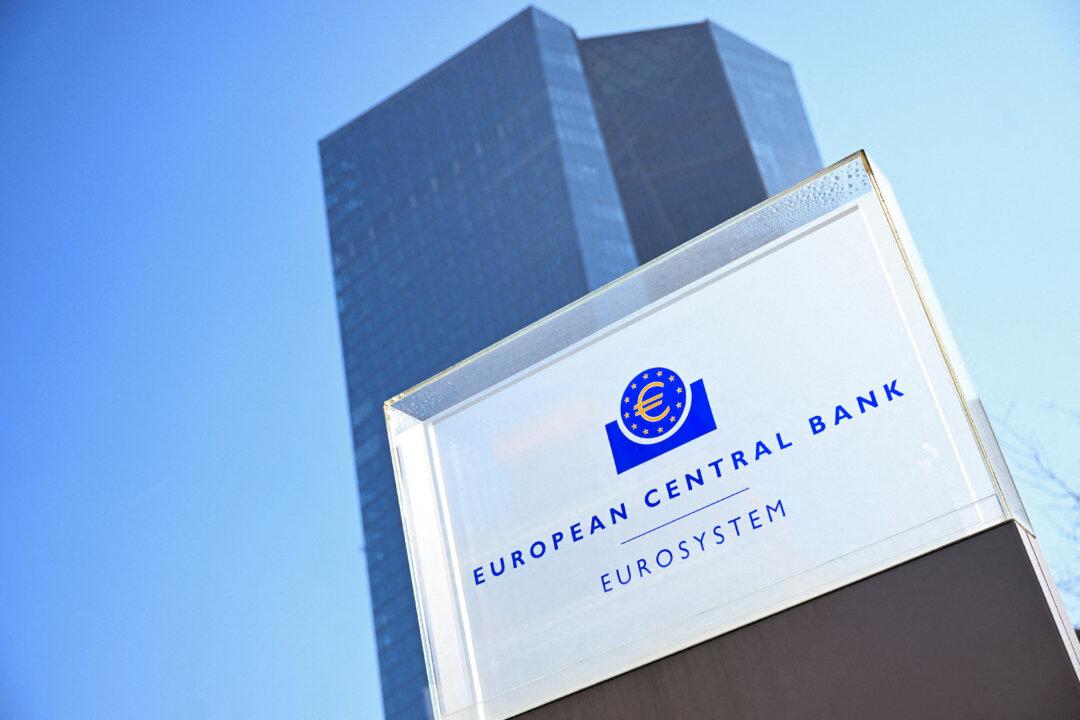Target stock fell over 8 percent on Wednesday after the retailer posted quarterly results that showed sales declining for the fourth straight quarter as inflation-weary customers pulled back on spending, especially on non-essentials.
The discount retailer, often seen as a bellwether for U.S. consumer spending and the retail sector more broadly, reported on Wednesday a drop of 3.7 percent in comparable sales in the first quarter.
Included in that figure was a 4.8 percent decline in comparable store sales, also known as same-store sales. This is a measure of revenue from store locations that have been in operation for over a year, which serves as a key retail metric that reflects organic growth. Comparable digital sales rose 1.4 percent, partially offsetting the decline in same-store sales.
Customer traffic at Target (as reflected in the number of transactions) fell 1.9 percent in the first quarter, while the average amount customers spent per visit also dropped by 1.9 percent.
Despite the lackluster first-quarter results, Target struck a cautiously optimistic note on its forward guidance, saying it expects comparable sales will remain at 0 to 2 percent for both the second quarter and the full year.
Consumers Feel The Squeeze
In an earnings call detailing the first-quarter results, Target chairman and CEO Brian Cornell said that inflation was continuing to put a strain on customers, with the “cumulative impact of higher prices on consumer prices on consumer budgets” was resulting in “continued soft trends” in discretionary categories.“Even as inflation moderates and we see sequential improvement in discretionary category trends, higher interest rates, uncertainty around the future of the economy, continued social and political divisiveness, and the upcoming election cycles have consumers concerned about what lies ahead,” he added.
Target’s total revenue of $24.5 billion in the first quarter was 3.1 percent lower than in the comparable period last year. This reflects a total sales decline of 3.2 percent, mostly due to a drop in discretionary categories, which tend to take a hit when consumers retrench and limit their spending on essentials.
Walmart, by contrast, which gets more of its sales from essentials like groceries, saw its sales increase by 3.8 percent last quarter as shoppers hunted for lower prices.
In a bid to respond to the needs of inflation-battered consumers, Target announced in May that it would cut prices on 5,000 frequently bought items, including milk, coffee, and diapers.
Inflationary Pressures Persist
The latest inflation data (from April) shows price pressures easing slightly from 3.5 percent to 3.4 percent in annual terms, and from 0.4 percent to 0.3 percent month-over-month.A number of analysts saw the wholesale inflation data as a sign that inflationary pressures are sticking around for longer.
“Inflation is not going away,” Brian Wesbury, the chief economist at First Trust LP, said in a post on X after the recent wholesale inflation data dropped. “In this environment, there is absolutely no justification for a rate cut by the Fed.”
Prices have risen 19.9 percent since President Joe Biden took office, according to the latest inflation data from the government’s Consumer Price Index (CPI) report. In some categories, the pace of inflation is even higher. For example, rent is up 20.8 percent, grocery prices are up 21.3 percent, and car repairs are up 30.2 percent.







